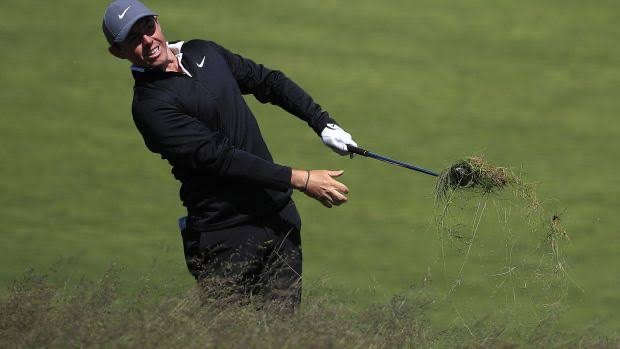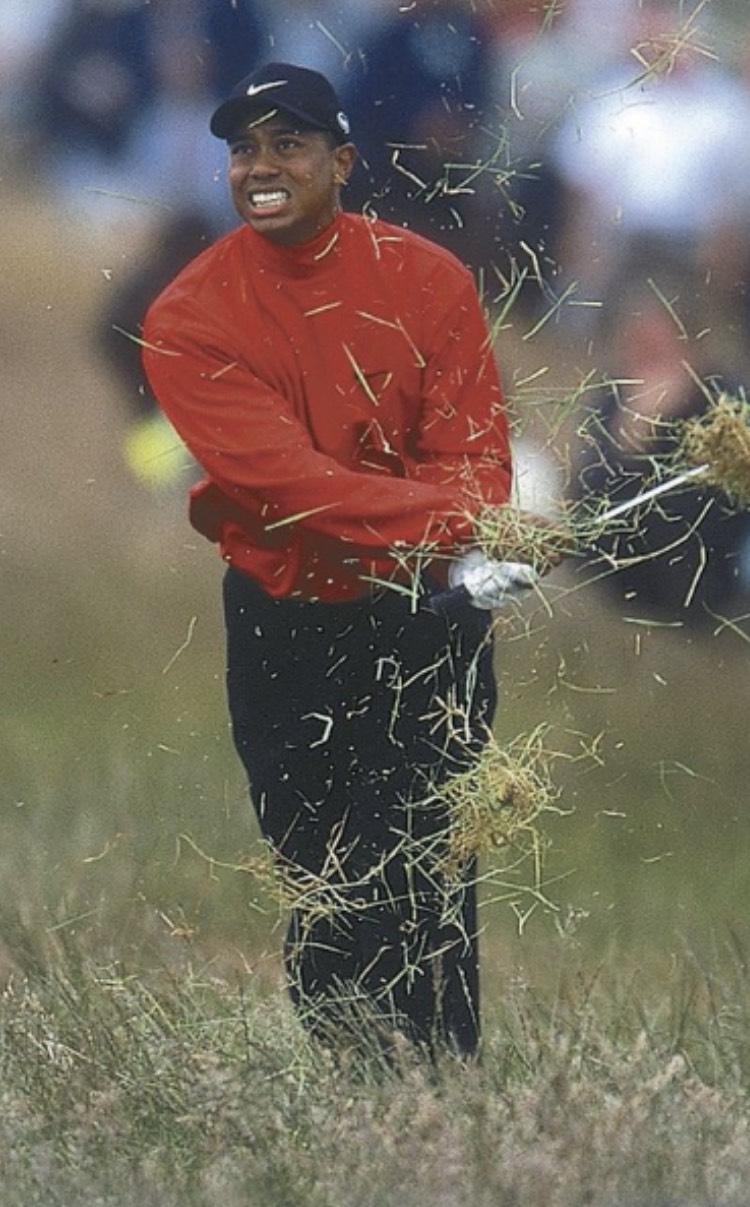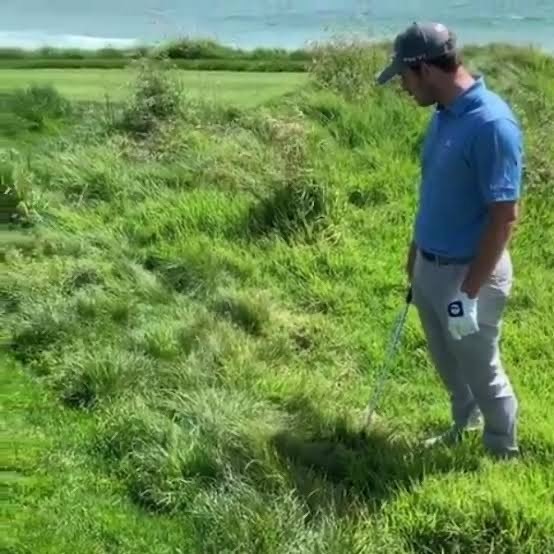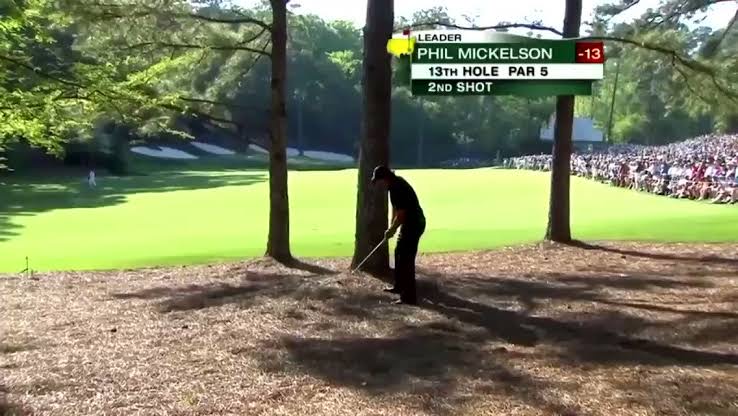
Words by Matthew Mollica
4 Minute Read
“Narrow the fairways and grow the rough” is the loud and consistent cry from onlookers when the issue of technology and distance arises in golf. Many offer it as a quick and effective solution, and more appropriate than revised equipment regulation. Letting the grass grow may be easy but it’s not the best answer. In fact, it’s the worst.
Golf demands a broad range of talents: thought, imagination, patience, creativity. Proficiency with iron play, driving, chipping, putting and other facets of the game. Speed, strength, skill, flexibility and more. Yet today, at the elite level at least, the game has morphed into one that disproportionately rewards distance. Some foundational components of golf like accurate driving have become devalued. Swing speed and elite driving distance have taken its place as essential commodities. Without this, professionals are at a major disadvantage, irrespective of how accomplished they are in other elements of the game.
It’s easy to see how some fans and commentators feel it’s logical to increase the difficulty of finding the short grass from the tee while also stiffening the penalty for inaccurate drives. But golf is a game of opposites, its endless complexities are often counter intuitive, and so it is with the growing problem of driving distance.
When a young, long-hitting Tiger Woods burst onto the scene ‘Tiger Proofing’ was seen as the obvious solution to a player gaining great advantage from long driving. Courses were stretched and new back tees were added, sometimes in absurd places, disrupting the natural routing of some of worlds the greatest courses. We now see the folly of this approach – it merely played further into the hands of those who hit the longest drives. Their advantage grew as they doubled down on distance and before long clawed back every yard that had been added. The shorter hitters meanwhile were left way back down the fairway, with long irons in hand, looking on enviously at the green gripping wedges in their counterparts’ hands.

Narrowing fairways and growing rough in response to today’s long-hitting, in an effort to persuade pros to favour accuracy over ‘hitting bombs’, is similarly flawed. It does not incentivise accuracy. Professionals often care little whether their tee shots find the fairway. The intent for many is to drive as hard and as far as they can. A wedge from the rough is more likely to yield a short birdie putt than a longer approach played from the fairway. Those who have the shortest approaches to the greens are more likely to score lower – the reams of statistical data now a part of the modern game back this up. So the incentive lies in maximising carry distance. In this way golf devolves to more closely resemble a long driving contest. Any remedy to the current state of the game must amplify the importance of driving accuracy, and attenuate the reward for raw distance and the disproportionate reward for clubhead speed we currently see.

Nobody with any sense seeks to selectively penalise the long hitter. As world renowned golf course architect Tom Doak suggested years ago, “the whole point of the ball debate is to preserve a balance between the different skills that constitute golf”. The long, accurate hitter should be rewarded. Those who work hard on technique, physical fitness and equipment optimisation deserve rewards. Yet the magnitude of those rewards should be in proportion to those realised by elite performance within other elements of the game. Currently – they are not. When players set out to smash a drive as hard as they can, and are significantly better off with a longer drive than an accurate tee shot, golf has a problem.
Alister MacKenzie designed several of the game’s finest courses including Cypress Point, Royal Melbourne and Augusta National. Several statisticians and commentators who populate contemporary professional golf deride MacKenzie and dismiss his views as antiquated. Those who promote his writings have been fobbed off as architecture geeks, wanting golf to return to a bygone era. Yet MacKenzie wrote that “long driving is not a crime – it is a virtue and is more frequently achieved by skill and grace of motion than by mere brute force.” He also suggested “the fairways should gradually widen out where the long drive goes. In this way a long driver is given a little more latitude for pulling or slicing”. MacKenzie’s philosophies are less and less apparent through professional golf today. The game would do well to turn towards the tenets he penned decades ago.
Wider fairways with shorter rough promote better golf. When played on this style of course a fuller complement of golf skills may be called upon, and long driving, while still an advantage, reduces in importance. The game becomes more interesting for viewers and players alike. Golfers can still drive aggressively, yet shorter players may still compete, and their skillset proportionately rewarded. Modest rough allows those with daring and creativity to play bold recovery shots. Thick rough neuters this talent and deprives fans of some of the most exciting shots the game sees. It reduces everyone to the same boring sand wedge hack escape.

Phil Mickelson’s brave, spectacular second shot to the 13th green at the 2010 Masters would never have been played if the fairway was bordered by long rough.
It’s no coincidence that two of the most compelling tournaments in the last year or so were The Masters and the Presidents Cup at Royal Melbourne. Courses with wide fairways and modest rough. Venues that prize thought, accurate iron play, daring recovery shots, short-game creativity and driving prowess in equal measure. Golfers even choose which portion of fairway to hit to, rather than blazing away with impunity from the tee. Driving accuracy is required and rewarded significantly – as it should be.

Wider fairways and sparing rough works best for professionals when balls and clubs are also in proportion to the playing arena. And it is this philosophy which lies at the heart of the argument made by those calling for a rollback of the modern golf ball and driver. Growing the grass is not the solution – it only exacerbates one of the biggest problems in golf today.

Join the movement
Without a coordinated and strong push back from golfers, the game we love will be stretched even further to the brink. Until now, our voices have been too disparate to be heard.
In order to make a noise that is clear enough, and loud enough, that the governing bodies will listen, we must band together and make our call in unison.
As we build our list of pilots and patrons, you can show your support by following along via our instagram account and twitter account and signing up to our email list below.
Email us any time at info@rollbackalliance.org
